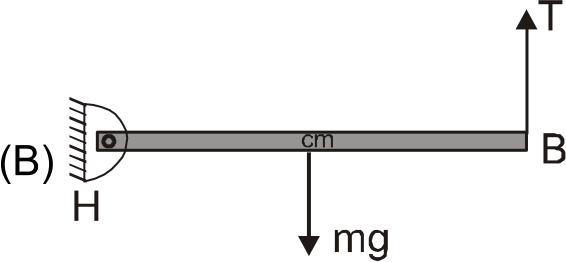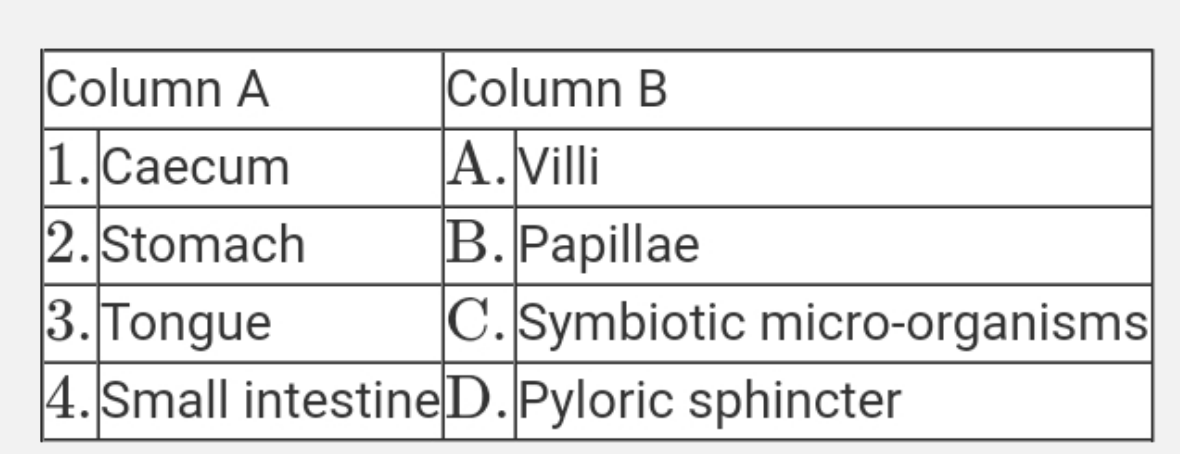Match the column :

A
pqrs(A)3241
B
pqrs(B)4231
C
pqrs(C)4321
D
pqrs(D)3214
Video Solution
Text Solution
(A)Due to reflection from a moving wall, frequency of the sound wave will change.So, the superposition of the incident waves and the reflected waves and the reflected waves will produce beats.
(B) 
Applying torque balance about the hinge point 'H'
(mg)(l2)=(T)(l)
T=mg2=20×102=100m
Natural frequencies of the fixed-free wire are
f=14l√Tμ,34l√Tμ,54l√Tμ,....
f=14×1√1000.01,...⇒f=25,75,125,...
f=75 Hz matches with the frequency of the source, so resonance will occur and standing waves are generated
(C )y=Asin2(ωt−kx)+Bcos2(kx−ωt)+Ccos(kx+ωt)sin(kx+ωt)
Solving we can get.
y=(some constant) cos2(ωt−kx)+(some constant) sin2(kx+ωt)
which is superposition of waves moving in a opposite direction.So, standing waves can be produced.
But if A=B or C=0, then only travelling waves will be formed.
(D)if the hammer is hit once, a pulse will generated and a moving pulse is a travelling wave.The pulse will more rightward, will be reflected from the wall and then move in opposite direction.
As there is no other wire, so standing waves will not form.As this is just a pulse, so particle will not perform SHM.
|
Updated on:21/07/2023


